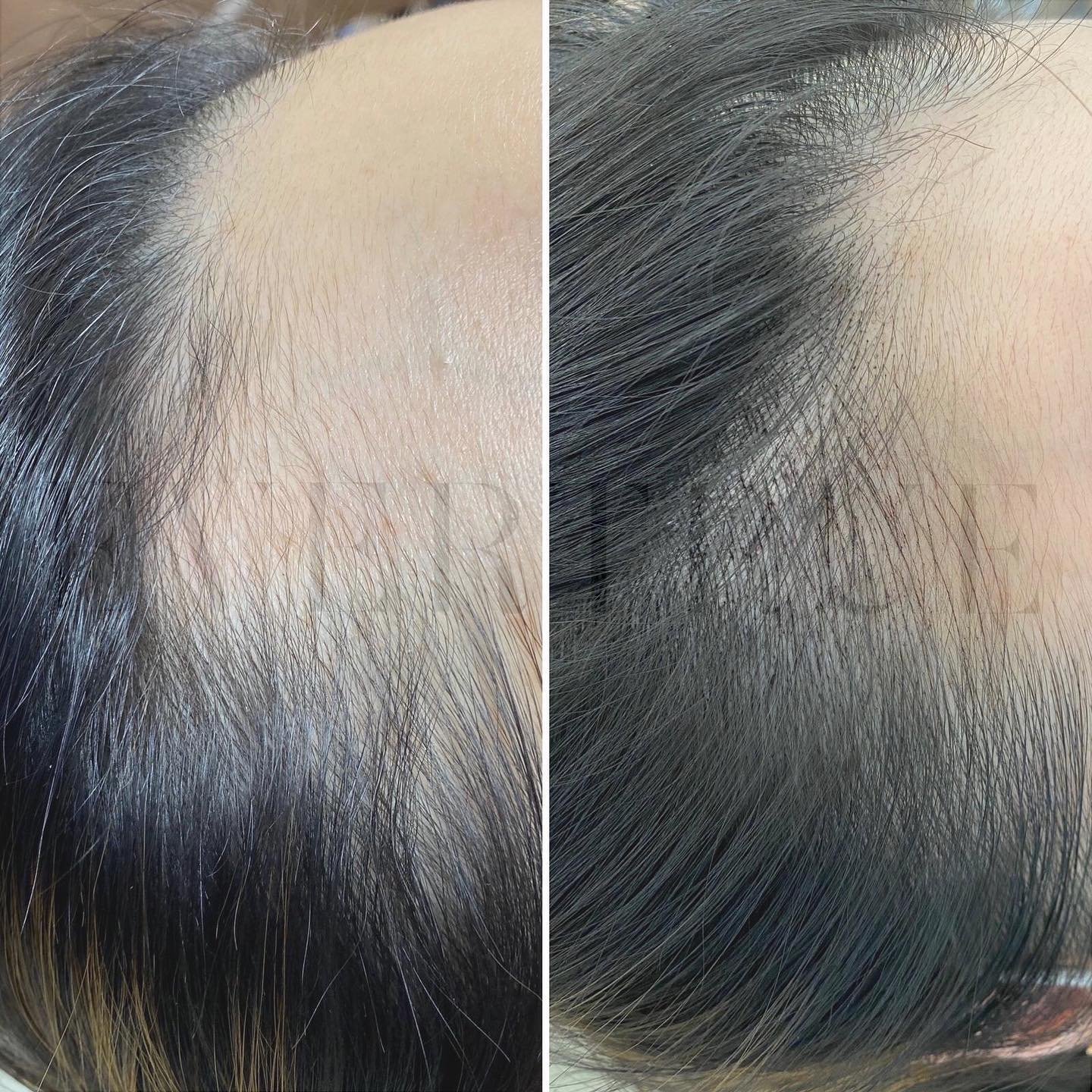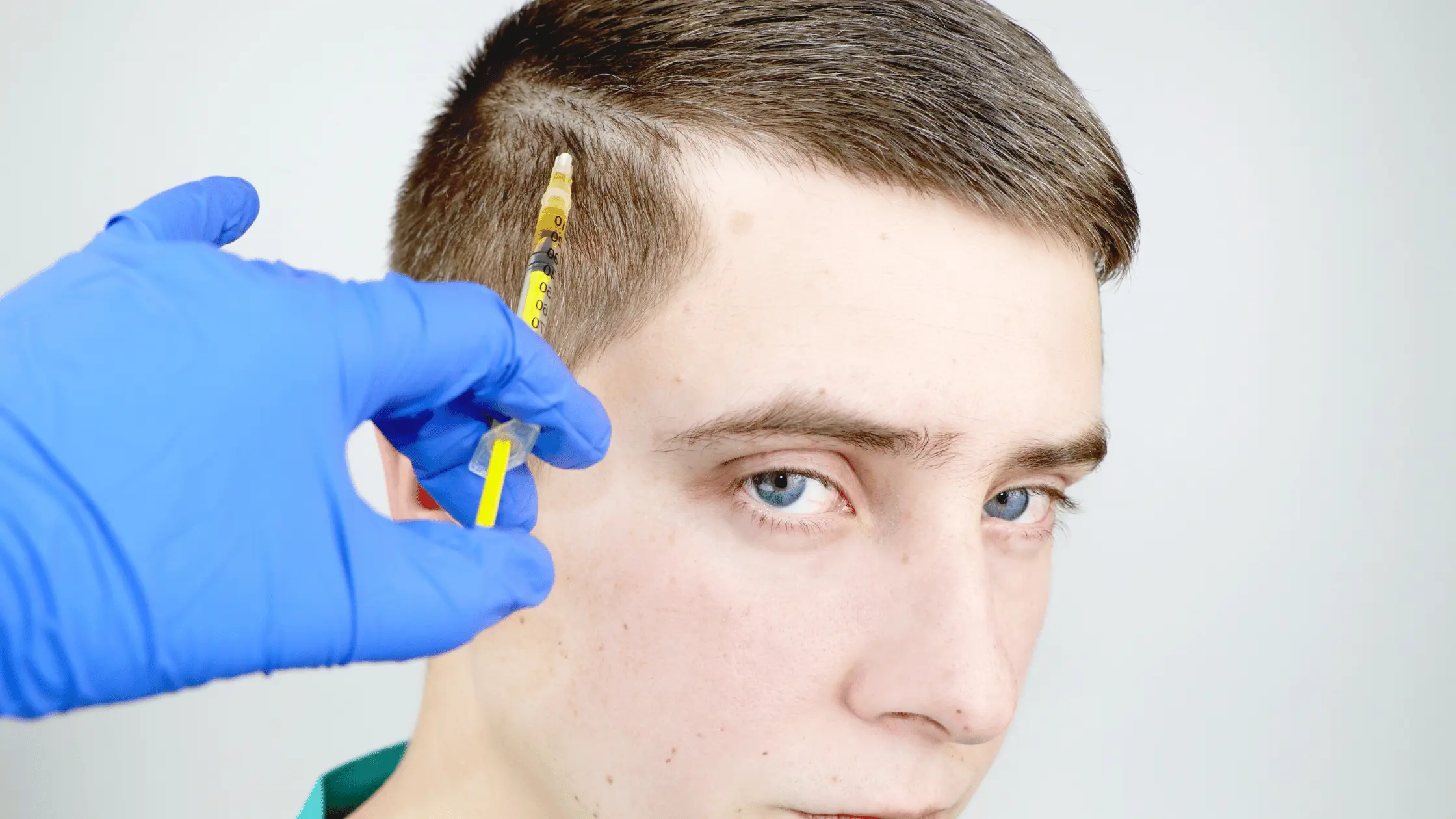Different factors contribute to hair loss or thinning, including nutrition, genetics, certain health problems, and stress. Regardless of the reasons, hair loss can affect one’s mental health. Studies show that hair loss can significantly damage one’s emotional state, causing some people to avoid particular activities, trying to conceal the problem.

Microblading can conceal the thinness of hair, a treatment widely used for scanty or thin eyebrows. You can have your hairline microblading if you are unhappy with the appearance of your hairline due to genetic disorders or hair loss.
Keep reading to learn about the risks and benefits of hairline microblading.
What is Hairline Microblading?

Hairline microblading is a form of superficial micro pigmentation (also known as tattooing treatment), in which pigment is deposited on the skin using stacked needles and a manual tool.
The procedure produces hair-like incisions that last between 12 to 18 months and give the appearance of fuller hair.
For those shedding at their hairline or where they separate their hair, hairline microblading is a semi-permanent remedy, and also for hair loss and thinning.
The entire hairline can have microblading, or specific sections like the temples and portions can get it. For women, it is a remedy for a receding or thinning hairline.
Microblading strokes are inserted into the epidermis, making it look real and merging with natural hair, providing the appearance of fuller hair.
Who Is A Microblading Hairline For?
Individuals who desire fuller hair can benefit from hairline microblading, including those who have experienced alopecia.
Hairline microblading is also common among those who wish to contour their faces. Some people who have receding hairlines hide it with makeup. They can also benefit from this procedure.
The result of hairline microblading lasts longer because it won’t rub off or smear when you sweat or get your hair wet.
Is Hairline Microblading For Everybody?
Only some people should get hairline microblading. Who should stay away from it?
- The outcomes may be less anticipated for those with really oily skin because too much sebum is produced, and pigments frequently migrate. The individual hair strands seem unattractive on oily skin. They could become excessively powdered and hazy, losing their original appearance.
- You shouldn’t undergo hairline microblading if you have eczema or psoriasis.
- The pigments used could make some individuals allergic. Therefore, a patch test should be carried out ahead of time to prevent an allergic reaction.
- You must have some hair in the hairline area for a perfect result. If there isn’t much natural hair in the area, the result won’t look great as it should. Therefore, the microblading artist should assess your suitability for hairline microblading.
Scalp Micropigmentation (SMP) Vs Hairline Microblading
The terms “scalp micro-pigmentation” and “hairline microblading” are used interchangeably; however, this is inaccurate.
Microblading is a tattooing technique that uses a flat blade with multiple tiny needles to implant pigments in a series of strokes to resemble short but distinct hair follicles.
But instead, scalp micro pigmentation (SMP) uses a smaller needle to create tiny dots in a patient’s thinning areas to give the appearance of having more hair.
Some medical Institutions perform micro scalp pigmentation, a paramedical colour implant technique—a type of tattooing—in which inert pigment nanoparticles are injected into the scalp to replicate the look of short, precisely cropped hairs on the scalp.
Hairline microblading and scalp micro pigmentation are distinct procedures; be careful to keep the two separate. In contrast, micro pigmentation uses individual pigment pinpricks to look like a shaved head, and microblading typically refers to hair-like strokes.
Benefits of Hairline Microblading
- Microblading treatments give the appearance of actual hair follicles by using strokes.
- The treatment boosts confidence by reducing the appearance of a receding or thinning hairline.
- The results are very natural-looking and can be seen immediately. In terms of appearance, you can hardly tell the difference between microblade and actual hair.
- The hairline is created specifically for each client, and individual strokes are drawn before the treatment to show the clients what the final result looks like.
- Those with limited donor hair who wish to achieve the appearance of more density can also benefit from it.
How to Prepare for Hairline Microblading
Firstly, you must ensure the scalp is adequately prepared before a hairline microblading or micro pigmentation procedure. Since you won’t be able to wash the treatment region for a week after that, I advise cleaning your hair shortly before the treatment.
For five to seven days before the treatment, individuals undergoing hairline microblading should abstain from taking aspirin, vitamin E, alcohol, caffeine, or blood thinners.
Furthermore, three to five days before the treatment, I strongly advise against using retinol, glycolic acid, harsh scrubbing, or abrasive products in the treatment region.
Lastly, when going for the treatment, the scalp must be dry and clean without using any moisturizer, gel, or other products.
What to Expect During and After Hairline Microblading
For the client to know what the outcome would look like, the artist starts by sketching the client’s hairline strokes with a brow pencil.
Then he will apply numbing cream; there is hardly any discomfort. Finally, the procedure starts; depending on the size of the area to be microblade, it can last one to three hours.
Does It Hurt?
Although the hairline area is delicate, the artist uses a numbing cream to make the procedure less painful. The numbing cream may wear off during the procedure, making it slightly unpleasant but manageable.
Does Hairline Microblading Affect Hair Growth?
The answer is NO. The pigment is only inserted superficially, not as deep as the hair follicles. As a result, it won’t stop hair from growing.
How Long Does It Last?
Hairline microblading lasts longer than eyebrow microblading, and washing with shampoo often speeds up the fading process. On average, hairline microblading lasts up to 1 year. Then, a touch-up is done to prolong the effects and add more pigment.
The Aftercare
The aftercare is simple and easy to understand. It includes:
- You wait for a week before shampooing your hair.
- No shower for two days; take a brief shower with little steam; water must not touch the affected area.
- For two weeks, no sweating, and after the treatment, no physical activity, saunas, and steam rooms are not permitted.
- You can’t swim for at least a month.
- No hair coloring for four weeks (and 2-3 weeks before the treatment).
- While it may be itchy, avoid scratching the area.
- If a healing balm is suggested, use it as directed.
Side Effects
During pigment deposition in the skin, there is a chance for side effects comparable to those of tattoos.
Due to the process, there is a chance that the area will become irritated or infected, which might cause scar tissue.
Additionally, the pigment’s look or color can alter with time. Laser treatments, which are uncomfortable and expensive, are important to remove the pigment.
Conclusion
Hair loss and thinning can affect a person’s confidence regardless of the cause. Hairline microblading offers a semi-permanent fix, and the results last 12 to 18 months.
If you’re considering this procedure, make an appointment with a specialist. And look at the before and after pictures to know if the procedure suits you.
